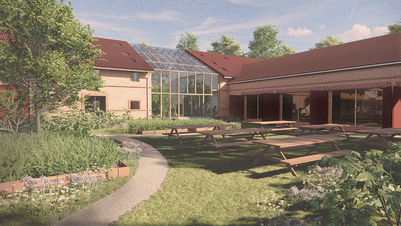
An Architectural Design Revolution: A MSCA Research Project Links our Interior Domestic Space to Nature


I am happy to share my post published on Marie Curie Alumni Association's Blog "An Architectural Design Revolution: A MCAA Research Project Links our Interior Domestic Space to Nature"
"I unfold a fascinating study of exemplary postwar-Danish and traditional-Japanese buildings that contribute via rich multi-sensory stimulation to the connecting of their interior space with the surrounding nature. I develop this through diverse design disciplines, Architectural Interior, Landscape, and Biophilic Design approaches with a focus on linking architectural research to future practice.
Biophilic Design is an innovative design paradigm, but in many respects harks back to previous architectural practices and principles revealed in buildings throughout architectural history.
The internationally renowned post-war Danish buildings built in the 50´s and early 60´s, left a leading European legacy that has greatly influenced the domestic sphere and has further created the developing framework of the Danish quality of life. On the other hand, it is remarkable that in Japan - a country that has always attracted Danish architecs - life has traditionally been understood to be in communion with Nature. Their both architectural cultures are deeply inspired by the relationship between humans and Nature mediated through architectural space, and offer exemplary sensory experiences of the natural world by complex mechanisms. In my selected case-studies, there is a connection to the surrounding nature and the variations that take place with the passing of time or with the seasons, the changes of nature are ever-present, architecture harmonizes with nature, there is a world of relationships between the interior and exterior space, prevailing human comfort.
My study is still in progress, but it reveals that these case-studies provide unique biophilic experiences which lessons can contribute to enhancing the health and wellbeing of communities through daily interaction with Nature in urban areas in the EU and beyond."

















